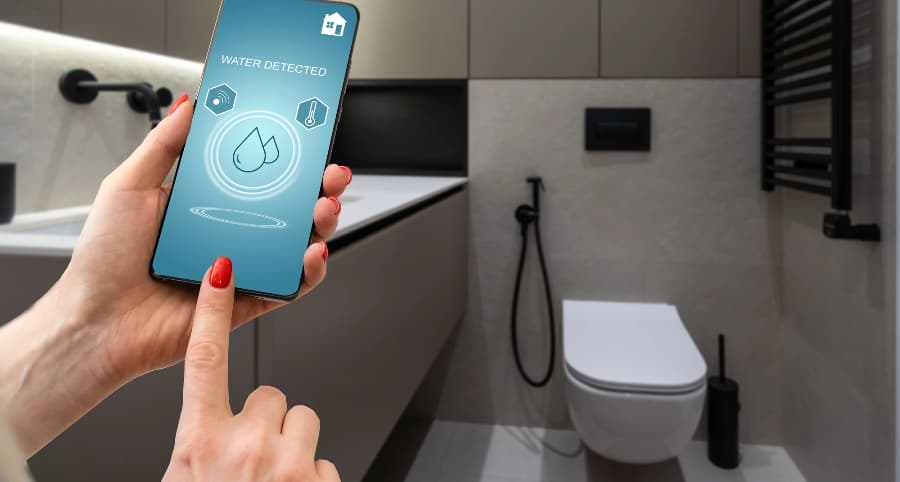How does a water sensor work and why install one with your Tyler smart home?

One minor leak at your house can result in major issues and thousands of dollars worth of damage. You must safeguard against this risk; luckily, there’s an easy way to do so. A water sensor is a simple, effective, and economical solution. See how they work and why you ought to incorporate water sensors into your Tyler smart home.
How water sensors protect Tyler properties
Water enters homes in numerous ways, whether from a broken appliance, plumbing problem, weather-related event, or simple human error. No matter how it happens, you have to know right away, and this is where water sensors come in. But how do they really work?
The majority of water sensors are conductive and work with two electrodes. When water enters the space between the electrodes, an electrical link is formed, triggering your alarm. You’ll also find capacitive sensors that emit an electrical field. When water reaches the conductive parts of these components, the field is interrupted, and your alarm activates. Optical sensors employing infrared LED light are an additional choice.
Get more protection from water sensors
Some advanced water sensors provide even more defense as they use built-in temperature sensors. This is a helpful way to prevent frozen pipes. If there’s an extreme decrease in temperature, you’ll find out at once. Taking measures before pipes break will shield you from water damage and exorbitant repair costs.
Why incorporate water sensors into your Tyler smart home?
When water issues happen, you have to be notified right away. You can achieve this objective by incorporating water sensors into your smart home. Whether you’re home to hear the alarm or not, you’ll be sent an instant update on your cell phone. As an additional backup, your round-the-clock monitoring agents will be notified. Every second counts in a water emergency to limit the damage and disruption to your life.
Where should you place water sensors?
Any location at risk of an influx of water is an ideal position for water sensors. Place them in these locations:
- Bathrooms: Place behind toilets or close to tubs.
- Basements: Water frequently seeps into lower floors through damaged walls or due to excess rain or malfunctioning sump pumps.
- Next to water heaters or appliances: Any water-using appliance might leak at some point.
- Underneath sinks: Water sensors are ideal for discovering pipe leaks in areas hidden from view.
- Attics: Detect roof leaks quickly and avert costly repairs.
Get water sensors with your Vivint smart home
Give your property the robust protection it deserves with modern tools from Vivint. Our water sensors in Tyler integrate with your Vivint cell phone app to deliver automatic alerts whenever your alarm is triggered. You also get integrated temperature sensors to avoid frozen pipes. Learn more about the smart home tools available in Tyler by dialing (903) 459-7565 today.
